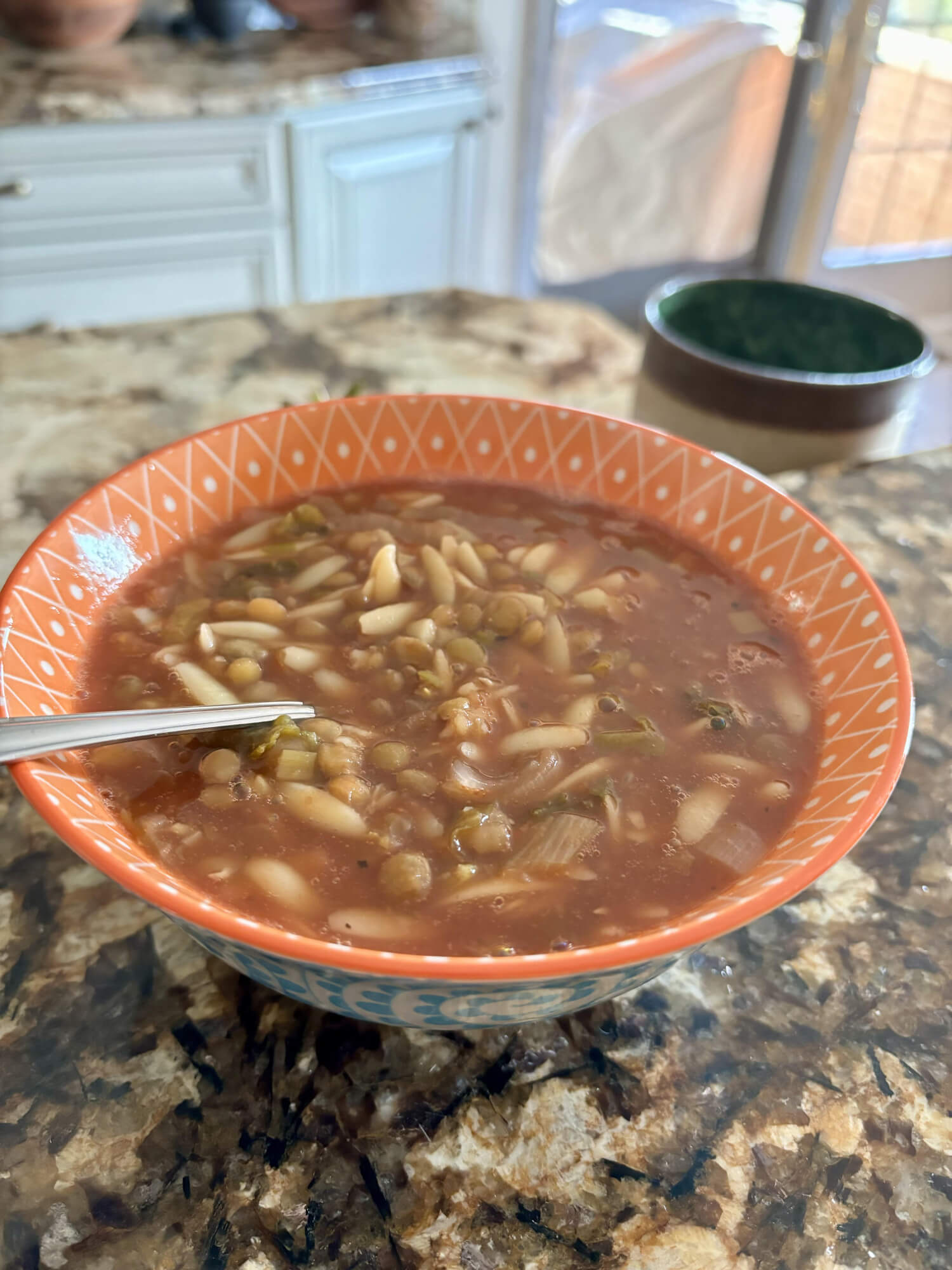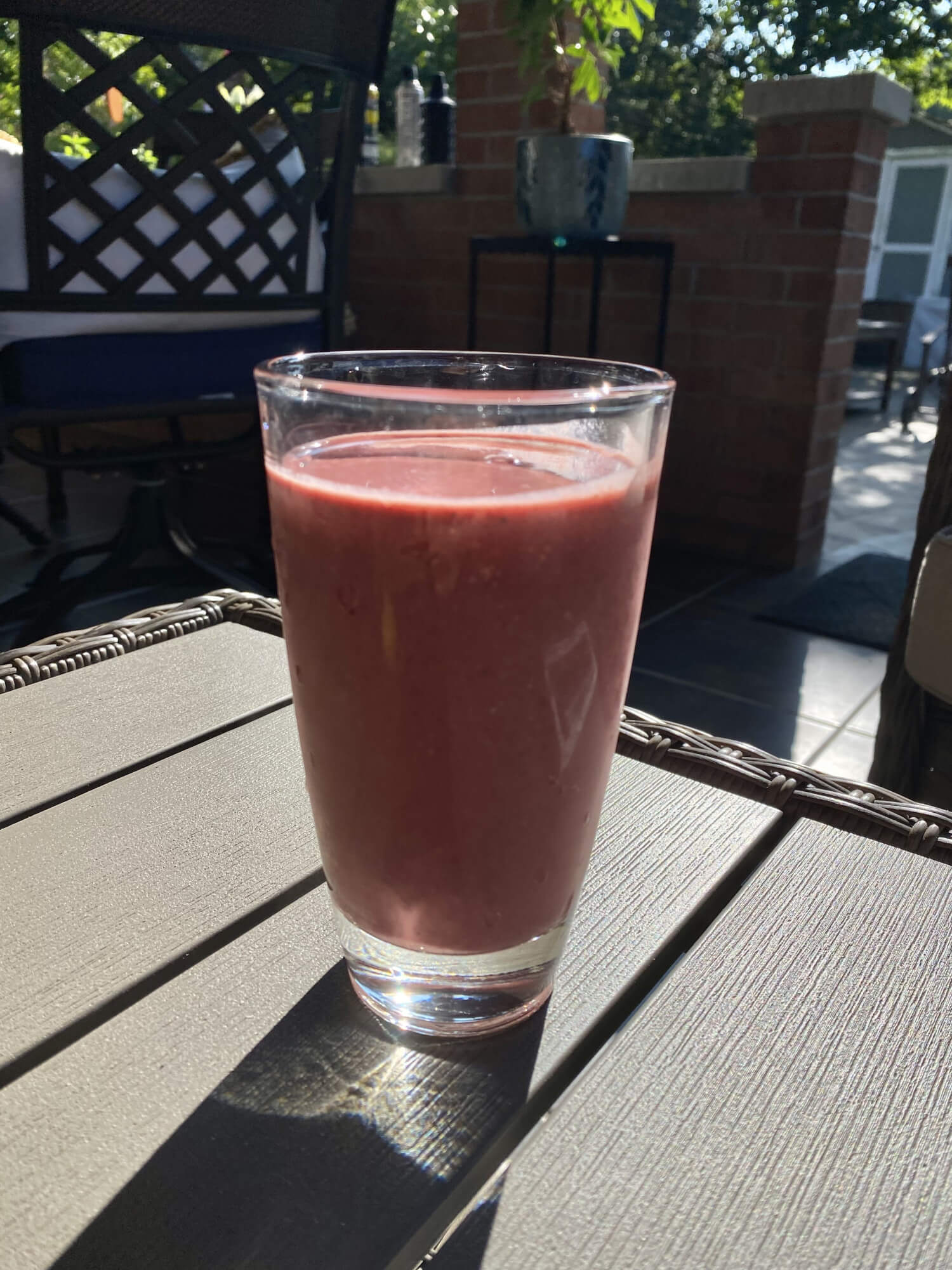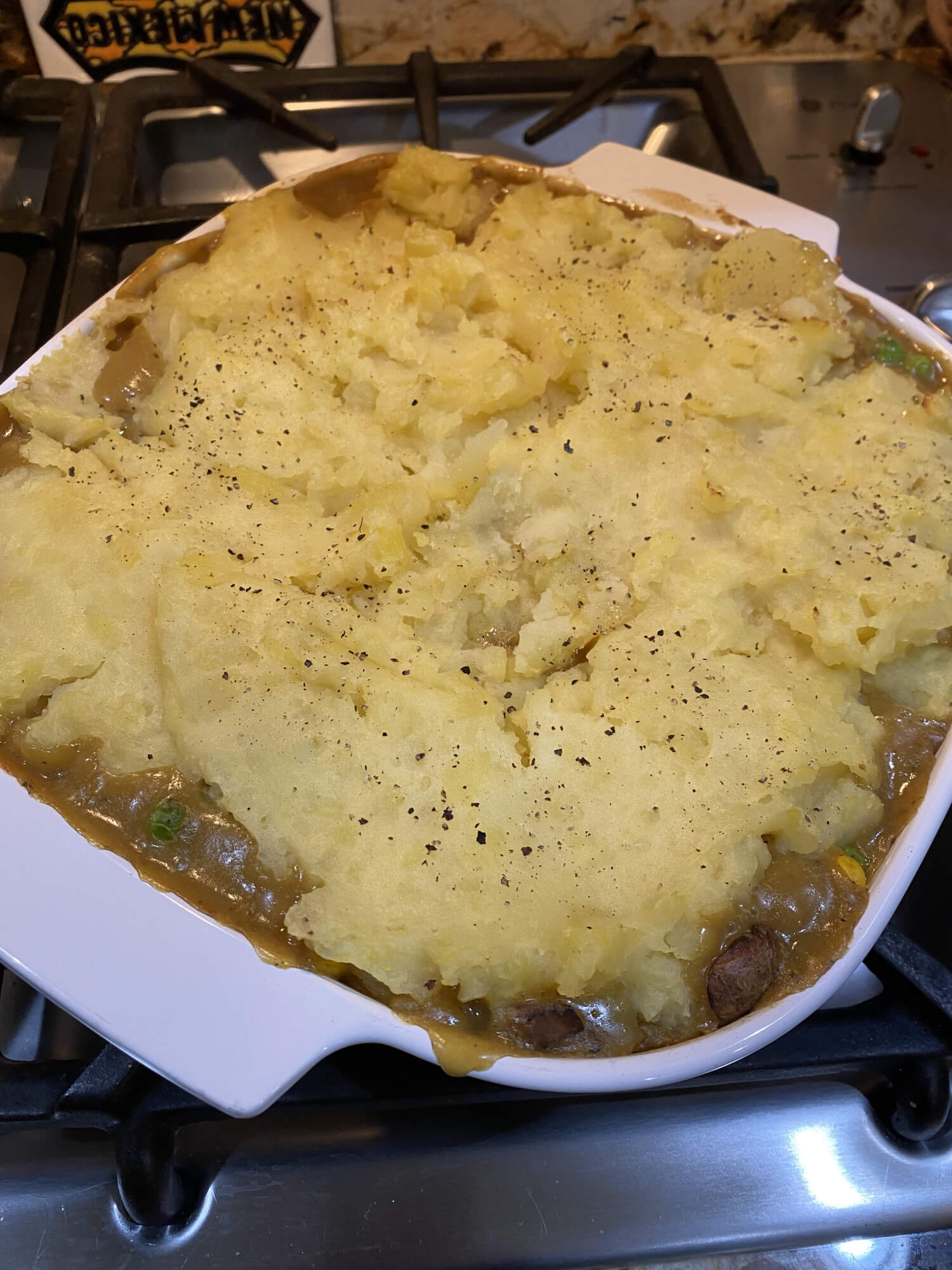lentil stew

It's soup weather and this lentil stew is definitely comfort food. I love to use leeks in recipes, so remember to slice them lengthwise first, then slice into half-moons. Give them a bath in water to remove any sandy sediment. I used a head of escarole in this recipe, but you could substitute any other greens. I also used Passata, which is a tomato puree, strained of seeds and skins, and does not contain seasonings. It is traditionally used in many Italian dishes. This recipe is quick and easy.
Ingredients
- 1 leek, sliced
- 1 shallot, diced
- 5 cloves garlic, minced
- 2 quarts vegetable broth
- 24 oz bottle Passata
- 1 cup uncooked orzo
- Lentils (prepare 1 cup lentils separately)
- 3 bay leaves
- 1 teaspoon each dried basil & oregano
- 1 head escarole, roughly chopped
- Salt & Pepper to taste
Instructions
Cook 1 cup raw lentils according to package directions until tender and set aside. Sauté leek and shallot until translucent, stirring frequently (no oil needed) add garlic and stir a few minutes more. Add the vegetable broth, passata and all the remaining ingredients. Simmer until the orzo is done. Add the lentils and simmer until heated through. Should serve 5.
 Your Wellness Lifestyle Starts Here
Your Wellness Lifestyle Starts HereAlmost everyone agrees that having a routine is a good idea, and that it is needed in order to develop health-promoting habits. But there is a lot of resistance to following through and developing and sticking to routines. A friend who does not like routines says that if forced to do everything in a routinized way, he would lose the ability to be creative, since spontaneity would be gone from his life. The reality is that usually the adoption of routines creates more time for spontaneity, not less. The reason is that when life is organized, chaos is reduced, and chaos interferes with getting many things done, including creative endeavors.
One of the keys to success in adopting health-promoting diet and lifestyle habits is establishing a daily/weekly routine. Routines provide structure, and structure is needed for organizing your life.
"Success doesn't come from what you do occasionally, it comes from what you do consistently."
How can you develop a health promoting environment? The key to good habit formation and maintenance is routine. I was away over the holidays and went off of my routine. But when I came home with a cold, I went back to my routine because I knew it would help me heal quickly. Once your health promoting routines and habits are developed, they are easier to resume.
Habits are defined as actions that are triggered automatically by environmental or contextual cues. Examples would include fastening your seatbelt as soon as closing the car door, or flossing your teeth after you brush. The cues (shutting the car door and brushing your teeth) remind you to perform the good habits (fastening seats belts and flossing). About 40% of the things you do every day are performed in the same situations and in response to the same cues. In fact, a considerable amount of research shows that performing any action again and again, under the same circumstances and in the same context, turns it into a habit.
As we enter a new year, we tend to want to set goals. There is something about the newness and excitement of starting over. The danger lies in falling for the trends, the new magic bullet for weight loss, the introduction of "super foods", the confusing and unsustainable diets, etc. Advertisers jump on the bandwagon to convince us of these magic formulas. The results are usually temporary. Trendy diets are not sustainable.
"New goals don't deliver new results. New lifestyles do. And a lifestyle is a process, not an outcome. For this reason, all of your energy should go into building better habits, not chasing better results."
The key is patience. Research shows that it takes between 15 and 254 days to form a new habit, depending on the person and the habit the person is trying to change or form. You can't just "break" a bad habit. You need to replace it with a good habit.
Honor yourself-body, mind and spirit-by establishing healthy routines and good habits which lead to a healthy lifestyle.
Sources:
Atomic Habits
Wellness Forum Health

DO YOU HAVE A STRATEGY?
The holidays are here and part of the fun of the season is the gatherings and spending more time with family and friends. Almost all of these occasions involve food, and it's a fair guess that they also include treats, sweetened beverages, and alcohol. While everyone has to make up his or her own mind about how to handle these occasions, I don't think it's a good idea to throw caution to the wind, eat anything and everything, and start over again in January for several reasons. One of them is that you were engaging in this type of behavior for a long time before deciding to change your diet and lifestyle to a healthier version, and it contributed to weight gain and health issues. One very important principle of the program I teach is that it is a plan for life. It is not a short-term heroic and restrictive diet that cannot be sustained. On the other hand, binging on junk food for short periods of time is not a good idea either.
Another reason to avoid a holiday eating orgy is that it will inevitably be accompanied by weight gain and feeling bad. It does not help to go backwards if you have been making progress toward your weight and/or health improvement goals.
The better strategy is to continue the "changing your life" program and learn to how to be a healthy eater who can enjoy the holidays. If you have been to any of my classes or events, remember the key strategies to implement any diet and lifestyle changes. It needs to be accessible, sustainable, and defensible with science.
If you are attending a party, eat a large salad, or a healthy soup with lots of veggies before you go. It's important to not attend these events when you are "starving". Fill up on salad and vegetables at family dinners and enjoy a few Christmas cookies!
Remain mindful of your strategy and intentions. This way you can have fun, indulge yourself a little, and wake up on January 1 feeling good about yourself, your weight, and your health.
Lastly, don't forget about exercise! Continuing your workouts is part of learning how to enjoy holiday seasons as a healthy person. Exercise can offset the effects of those cookies!
Stay tuned for 2024 as I resume classes and events, with hopefully more zoom meetings for the out-of-town folks.
I wish all of you a happy and healthy 2024!
Looking for a healthy side dish to bring to dinner? Check out this Cranberry Kale Pilaf. If you don't like Kale, sub spinach. Cranberry Kale Pilaf - Center for Nutrition Studies
wellness forum health smoothie

Since I am asked often about my daily smoothie, I wanted to share it with you. This health promoting smoothie mix contains spirulina, beet, spinach, wheatgrass, tomato, carrot powders, and Stevia. I order without Stevia (upon request). I pre-grind the whole flax seeds and it's the finest food grade organic flax seeds you can buy! Larger, flatter, softer and tastier than other flax seeds. The Brewers Yeast contains B vitamins and trace minerals. The green tea is optional as well. This food-grade tea is grown in a remote area of China. Each leaf is hand-picked and packaged to preserve nutrient density.
The super foods smoothie gets me going in the morning with lots of energy to do my morning workout.
Ingredients
- 8 oz plant milk
- 1 cup frozen berries
- 2 tablespoons smoothie mix
- 2 tablespoons raw oatmeal (optional, but it makes it creamier)
- 1 banana
- 1 tablespoon flaxseeds
- 1 tablespoon Brewer's Yeast (optional)
- 1 tablespoon green tea (optional)
Instructions
Place all ingredients in a blender!
I always have smoothie mix for $26 for a 1 lb bag (includes shipping) in stock to bring to events, as well as the other dry ingredients and other products such as soup mixes, probiotics and Elderberry Syrup.
These are some of the products that I keep on stock:
Smoothie mix $26 1 lb bag
Brewers Yeast $6.75 1 lb bag
Flax seeds $6.00 1 lb bag
Date & Almond Granola $8.70
Chocolate Oatmeal Bar mix $9.25
To view all of the products and to order directly, click on Foods and Products - Wellness Forum Health. Prices listed on the Wellness Forum Health website do not include shipping, however, shipping is free on orders over $250. To order directly, call 614-841-7700 and tell Kelly that I sent you!
shepherd's pie

Comfort food at its finest! This plant-based Shepherd's Pie can be modified by adding some lean, organic ground beef. I have found that using Yukon Golds for the mashed potatoes is best as they are creamier. The nutritional yeast is a dairy free way to add a cheesy flavory to the mashed potatoes. You can make this dish heartier by adding 1 cup of cooked lentils.
Ingredients
- 3 lbs Yukon Gold potatoes
- 2 tablespoons nutritional yeast
- 2 bay leaves
- 2 - 2 1/2 cups veggie broth
- 1 onion, chopped
- 3-4 cloves garlic, chopped
- 1 lb portabella mushrooms, sliced
- 1 large carrot, thinly sliced
- 1 cup frozen peas, defrosted under warm water
- 1 cup frozen corn, defrosted under warm water
- 3 tablespoons whole wheat flour (for gluten free, use oat flour)
- 1 teaspoon each: sage, thyme
- Salt and pepper to taste
Instructions
Clean and cube potatoes and place in a pot with cold water and the bay leaves. Boil til tender, drain, remove bay leaves. Add the nutritional yeast and about 1/2 cup of the veggie broth (or almond milk if desired). You can add a bit of plant-based butter as well. Mash until creamy, adding more broth until you achieve your desired consistency. Set aside and let cool.
While your potatoes are boiling, sauté the mushrooms until browned and set aside. In a hot frying pan, sauté the onions until translucent, add the garlic, stirring to prevent sticking. Add the carrots and 2 cups of the broth. Bring to a simmer, add the flour and stir, simmering for 2-3 minutes, stirring so that your gravy will not stick to the pan. Add the peas and corn, salt, pepper and herbs. When the gravy is to your liking, add the mushrooms. Carefully place the vegetable mixture into a 8x8 casserole dish. Top with the cooled mashed potatoes and spread them out evenly with a fork. Bake at 350 degrees for about 20 minutes, keeping an eye on it as it might bubble over. I usually place aluminum foil under the dish. Remove from oven and let sit about 10 minutes.




